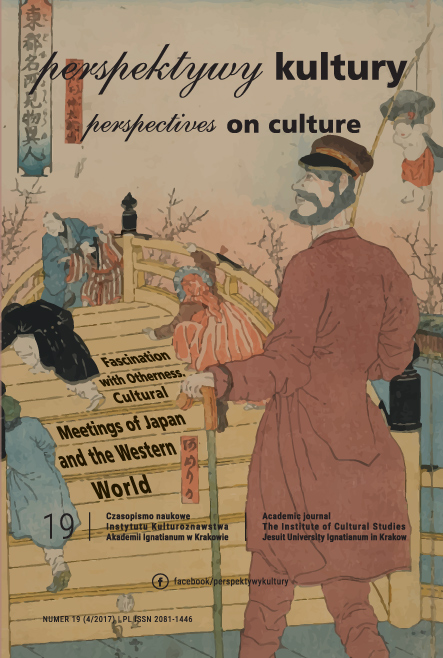East Meets West, then Gives It Back: The Fate of Pure Literature in a Global Age
Abstract
As part of the early Meiji (1868-1912) project of constructing a mod- ern “subject” to populate the newly-fashioned, Western-style nation- state, late nineteenth-century Japan’s literary artists enthusiastically engaged in the exploration of the individual self. Borrowing as their template the European realistic novel, they succeeded not only in es- tablishing the modern shōsetsu, but an equally new language in which to write such novels. Their work came to be known as junbungaku, or “pure literature.” Written by, for, and about Japanese subjects, junbun- gaku has come to be understood as a quintessentially Japanese mode of artistic expression.
This began to change in 1979 with the début of contemporary nov- elist Murakami Haruki. While engaging Western models in the for- mation of his literary landscape, Murakami rejected the “by/for/about Japanese” strictures of junbungaku, exploring a more global subject grounded in a hybrid conception of that subject as both Eastern and Western. Having thus encountered “the West,” Murakami then “gave it back” as a new, hybrid type of fiction that eschews polarizing con- cepts like “East” and “West,” emerging instead as a truly global form of literature. While scorned by some traditionalists as the “death of jun- bungaku,” Murakami’s work has also been heralded as a rebirth for se- rious global literature.
References
Chang, M. 2009. “Taiwanjin no Murakami Haruki: ‘Bunka hon’yaku’ to shite no Murakami Haruki genshō” (The Taiwanese people’s Murakami Ha- ruki: The Murakami Haruki phenomenon as ‘cultural translation’). In Fujii S., ed., Higashi Ajia ga yomu Murakami Haruki (Murakami Haruki as read in East Asia). Tokyo: Wakakusa Shobō, pp. 35-67.
Duus, P. 1976. The Rise of Modern Japan. New York: Houghton Mifflin. Fujii, S., Numano, M., Shibata M., and Yomota, I. 2006. “Naze sekai wa Murakami Haruki o yomu no ka” (Why is the world reading Murakami Ha- ruki?). In Shibata M., ed., Sekai wa Murakami Haruki o dō yomu ka (How does the world read Murakami Haruki?). Tokyo: Bungei Shunjū, pp. 1-10. Gordon, Andrew. 2003. A modern history of Japan: From Tokugawa Times to the Present. Oxford and New York: Oxford University Press.
Guth, C. 1997. “Some reflections on the formation of the Meiji artistic ca- non.” In Hardacre, H. and Kern, A.L., editors, New directions in the study of Meiji Japan. Leiden, New York, Köln: Brill, pp. 35-41.
Henshall, K. 2013. In search of nature: The Japanese writer Tayama Katai. Leiden and Boston: Global Oriental.
Hirano, K. 1961. Junbungaku to taishū bungaku (Pure literature and mass lite- rature). Gunzō (Dec.), pp. 154-172.
Hirano, K. 1972. Bungaku: Shōwa jūnen zengo (Literature: Around 1935). Tokyo: Bungei Shunjūsha.
Iser, W. 1980. The act of reading: A theory of aesthetic response. Baltimore and London: The Johns Hopkins University Press.
Karatani, K. 1990. Shūen o megutte (Concerning endings). Tokyo: Fukutake Shobō.
Keene, D. 1998. Dawn to the West: Japanese literature in the modern era. New York: Columbia University Press.
Kim, Y. 2009. Kankoku ni okeru Murakami Haruki no juyō to sono konte- kusuto (Murakami Haruki’s reception and its context in South Korea). In Fujii, S., ed., Higashi Ajia ga yomu Murakami Haruki (Murakami Haruki as read in East Asia). Tokyo: Wakakusa Shobō, pp. 7-34.
Kurahashi, Y. 1986. Amanonkoku ōkan-ki (Chronicle of the Amanon highway). Tokyo: Shinchōsha.
Mair, V (ed.). 2001. The Columbia history of Chinese literature. New York: Co- lumbia University Press.
Mishima, Y. 1966. Eirei no koe (Voices of the heroic dead). Tokyo: Kawade Shobō.
Murakami, H. 2015. Shokugyō to shite no shōsetsuka (The professional nove- list). Tokyo: Switch Library.
Ōe, K. 1989. Japan’s dual identity: A writer’s dilemma. In Miyoshi, M. and Harootunian, H., eds., Postmodernism and Japan. Durham, N.C.: Duke University Press.
Ōe, K. 1977. Teach us to outgrow our madness. Nathan, J., trans. New York: Grove Press.
Orbaugh, S. 2003. The problem of the modern subject. In Mostow, J., editor, The Columbia companion to modern East Asian literature. New York: Co- lumbia University Press, pp. 24-35.
Rubin, J. 1979. Soseki on individualism: “Watakushi no kojinshugi.” Monu- menta Nipponica 34.1 (Spring), pp. 21-48.
Strecher, M. 1996. Purely mass or massively pure? The division between “pure” and “mass” literature. Monumenta Nipponica 51.3 (Autumn), pp. 357-374.
Strecher, M. 2002. Arishima Takeo’s “Sengen hitotsu” and the origins of the proletarian literature debate. Gengo to bunka No. 2, pp. 241-265.
Strecher, M. 2002. Dances with sheep: The quest for identity in the fiction of Mu- rakami Haruki. Ann Arbor: Center for Japanese Studies, University of Mi- chigan Press.
Sugimoto, Y. 1999. Making sense of Nihonjinron. Thesis Eleven, No. 57 (May), pp. 81-96.
Takagi, M. 1985. Zengakuren to zenkyōtō (Zengakuren and zenkyōtō). Tokyo: Kōdansha Gendai Shinsho.
Tanaka, H. 2001. Cézanne and “Japonisme.” In Artibus et Historiae 22.44, pp. 201-220.
Twine, N. 1991. Language and the modern state: The reform of written Japanese. London and New York: Routledge.
Walker, J. 1997. Reflections on the entrance of fiction into the Meiji literary canon. In Hardacre, H. and Kern, A.L., editors, New directions in the study of Meiji Japan. Leiden, New York, Köln: Brill, pp. 42-44.
Copyright (c) 2017 Jesuit University Ignatianum in Krakow

This work is licensed under a Creative Commons Attribution-NoDerivatives 4.0 International License.
Autor, zgłaszając swój artykuł, wyraża zgodę na korzystanie przez Wydawnictwo Uniwersystet Ignatianum z utworu na następujących polach eksploatacji:
- utrwalania utworu w formie papierowej, a także na nośniku cyfrowym lub magnetycznym;
- zwielokrotnienia utworu dowolną techniką, bez ograniczenia ilości wydań i liczby egzemplarzy;
- rozpowszechniania utworu i jego zwielokrotnionych egzemplarzy na jakimkolwiek nośniku, w tym wprowadzenia do obrotu, sprzedaży, użyczenia, najmu;
- wprowadzenia utworu do pamięci komputera;
- rozpowszechniania utworu w sieciach informatycznych, w tym w sieci Internet;
- publicznego wykonania, wystawienia, wyświetlenia, odtworzenia oraz nadawania i reemitowania, a także publicznego udostępniania utworu w taki sposób, aby każdy mógł mieć do niego dostęp w miejscu i czasie przez siebie wybranym.
Wydawca zobowiązuje się szanować osobiste prawa autorskie do utworu.





